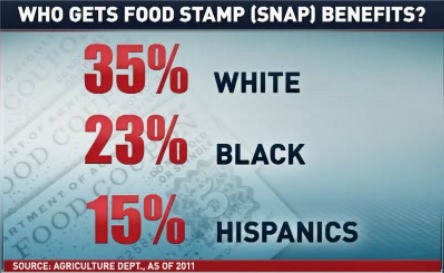
By Julia Belluz @juliaoftoronto julia.belluz@voxmedia.com
The administration’s budget proposal would cut SNAP spending by a quarter.
Trump’s new budget proposal has been panned for its magical thinking on economic growth and sloppy accounting errors.
The Supplemental Nutrition Assistance Program, or SNAP, has been helping keep Americans from going hungry since the 1960s. Formerly known as food stamps, the program began as a pilot under President John F. Kennedy in 1961 as part of the war on poverty. Today, SNAP is the biggest and most important nutrition assistance program: About 45 million Americans living below the poverty line — nearly half of them children — rely on SNAP to purchase food.
If Trump had his way, though, the number of SNAP recipients would soon be drastically cut. The administration’s first comprehensive budget proposal would trim SNAP spending by $191 billion over the next decade — which is about a quarter of the program’s funding. (The program costs the federal government $80 billion a year, which is a large amount of money — but a relatively small fraction of the budget.)
/cdn.vox-cdn.com/uploads/chorus_asset/file/8573277/budget_treemap__1_.jpg) Javier Zarracina/Vox
Javier Zarracina/VoxThis move shouldn’t come as a major shock. Republican leaders like Mick Mulvaney and Paul Ryan have long viewed welfare programs like food stamps as ineffective, arguing that they discourage people in need from getting jobs. As Mulvaney said at a White House briefing on Monday, “If you are on food stamps and you are able-bodied, we need you to go to work,”referring to stricter employment requirements the administration wants to add to SNAP.
In fact, researchers who study poverty and food policy say throwing people off SNAP is a silly idea because it’s one of the government programs that really works. As the Trump Administration’s own Secretary of Agriculture Sonny Perdue said earlier this week of SNAP, “You don’t try to fix things that aren’t broken.”
SNAP is administered by the states, and low-income people who meet the eligibility criteriaget access to “Electronic Benefits Transfer” cards (which are essentially debit cards) with money that they can use to purchase food. The lower your income, the more benefit you get (up to a monthly maximum of $194 per month for individuals and $771 for a family of five).
/cdn.vox-cdn.com/uploads/chorus_asset/file/8565793/Screen_Shot_2017_05_23_at_2.13.09_PM.png)
So let’s start with the low-hanging fruit: Does this system actually help people buy food and reduce the chances that they’ll go hungry?
When researchers have looked at SNAP’s effects on food insecurity (having too little or uncertain access to food), they’ve found consistently positive effects. In a 2012 paper, researchers found SNAP cut the prevalence of food insecurity by at least 13 percentage points. In another 2013 study, researchers found exactly the same reduction in food insecurity when they studied variation in state-level policies that affect access to SNAP. Other studies have found the same association between SNAP participation and a decreased risk of food insecurity, albeit by varying amounts.
SNAP has proven health benefits throughout life:
But the program’s effects have been shown to be broader than simply helping people buy food when they can’t afford it.
In the 1960s and 1970s, food stamps were rolled out in different counties at different times — and researchers have used this variation as a natural experiment to examine the health impacts of SNAP. From improving birth weight to reducing obesity, food stamps were associated with a number of positive health effects.
/cdn.vox-cdn.com/uploads/chorus_asset/file/8564183/Screen_Shot_2017_05_23_at_11.11.02_AM.png)
In one paper, published in 2011 in the Review of Economics and Statistics, researchers found that SNAP decreased the risk of having babies who weigh too little — a health outcome that’s associated with a slew of complications, from breathing and neurological problems to infection. Specifically, the researchers found that pregnant moms who began getting food stamps three months before their deliveries had babies with healthier weights compared to the children of moms who didn’t get SNAP. (The effect was particularly pronounced among black moms living in high-poverty areas.)
In a 2016 paper, in the American Economic Review, researchers used the same county-level roll-out variation to see if they could find a link between access to food stamps early in life and health outcomes later. Here too they found SNAP was effective: “Access to food stamps in utero and in early childhood leads to significant reductions in metabolic syndrome conditions (obesity, high blood pressure, heart disease, diabetes) in adulthood.” (There’s a growing body of evidence linking food insecurity to obesity — particularly among women — which helps explain this finding.)
SNAP lifts families out of poverty:
/cdn.vox-cdn.com/uploads/chorus_asset/file/8564071/Screen_Shot_2017_05_23_at_10.58.15_AM.png)
SNAP has been associated with positive economic impacts, too. For people under the age of 65, food stamps lift more people out of poverty than any other government program aside from the Earned Income Tax Credit. (For people over 65, Social Security is the most effective poverty alleviator.)
One of the researchers who has studied this effect, James Ziliak of the Center for Poverty Research at the University of Kentucky, said SNAP is also the most effective program at reducing deep poverty, which is families that live below half the poverty line. “The reason for the deep poverty difference is in order to get the Earned Income Tax Credit, you have to work. And those families who are in deep poverty, if they are working it tends to be a limited amount of work. So the SNAP program is most effective for that population.”
According to a policy brief from the Institute for Research on Poverty at the University of Wisconsin Madison, “In a typical year over the 1988–2011 period, SNAP lowers the poverty rate by 5% to 10%, and this effect is stronger in recessionary periods.” On deep poverty, the effect was even bigger: “Over the past two decades, the fraction of people living on incomes below one-half the poverty line is lowered by 10% to 20% by accounting for SNAP. In terms of the number affected, in 2011, roughly 4 million persons were lifted out of poverty and another 3.5 million were lifted out of deep poverty by SNAP benefits.”
SNAP is an effective recession buffer:
Again and again, researchers have found upticks in SNAP enrollment coinciding with recessions, which is why food stamps are referred to “automatic stabilizers.” When the economy gets worse, more people enroll, helping them afford food; when the economy improves, they drop off the SNAP rolls.
You can see that association very clearly in this diagram:
/cdn.vox-cdn.com/uploads/chorus_asset/file/8564211/Screen_Shot_2017_05_23_at_11.14.02_AM.png)
The “SNAP program is very responsive to recessions,” Ziliak said. “When you have a negative hit to your income, the SNAP program is there to provide that buffer against that income shock, allowing you to purchase food which frees up the other aspects of your budget to maintain costs.”
In the last recession, SNAP did what it was supposed to do: More people signed up for the program. That rate has been coming down since then — but not as quickly as some people thought it would, a fact researchers attribute to the nature of work today. People may not have regular hours, or they have a smaller hourly wages, which means they still sometimes need assistance buying food.
“As more and more go back to work because the economy’s recovered, they’re still getting (low) wages, and food stamps and Medicaid have come to supplement those bad wages, and bad benefits,” said Jim Weill of the Food Research and Action Center. “So these proposals [to cut] Medicaid and food stamps as well as the other programs really pull the rug out from under working poor families.”
There’s also research demonstrating that SNAP helps people redirect money previously spent on food to other essential expenses, keeping people from falling behind on medical bills, rent and utilities.
SNAP doesn’t discourage people from working:
One oft-repeated Republican party line is that benefits like SNAP discourage people from working. But according to the researchers who study SNAP, there’s no good evidence that it acts as a work disincentive. In fact, as the Center on Budget and Policy Priorities points out, the majority of non-disabled, working-age households that start to get SNAP don’t actually stop working.
Craig Gundersen, a professor of agricultural and consumer economics at the University of Illinois who studies SNAP, explained why in the Washington Post:
What makes SNAP perfect is that the tax on each additional dollar of income is 24 cents. There’s not a disincentive to work, except insofar as all taxes are disincentives to work. And I don’t think that 24 percent is a high tax rate in this context.
There’s also no cliff effect with respect to SNAP, because as your income increases, your benefits gradually go down.
There’s also little waste and fraud in the program. Some 95 percent of federal dollars spenton SNAP go directly to benefits. The USDA also takes SNAP abuse very seriously, which is why the rate of SNAP fraud has declined dramatically over the years.
Will the SNAP cuts go anywhere?
Trump’s budget proposal is not likely to go very far, as Vox’s Dylan Matthews explained. And the cuts to SNAP in particular may see some particularly strong opposition.
SNAP is part of the farm bill, and part of the program’s original intent was to support the production of food in this country. The agriculture and food industries like SNAP since it increases the demand for food. And so that’s two powerful lobbying groups that are going to push back against cuts that’ll shrink the size of the program.
There’s also the political fallout to consider. Food stamps are disproportionately popular among Trump voters. As Politico’s Helena Bottemiller Evich pointed out, “Seven of the 10 states with the highest rates of SNAP participation relative to population — including Mississippi, West Virginia and Louisiana — went for Trump in November.”
The proposal is also expected to rile up anti-hunger campaigners whose support is needed to pass the farm bill. “SNAP is the only thing that’s left of the safety net. And there’s so much evidence that it’s an inadequate safety net,” food policy professor Marion Nestle said. “You don’t want social unrest like you had in revolutionary France. You don’t want people starving.”










